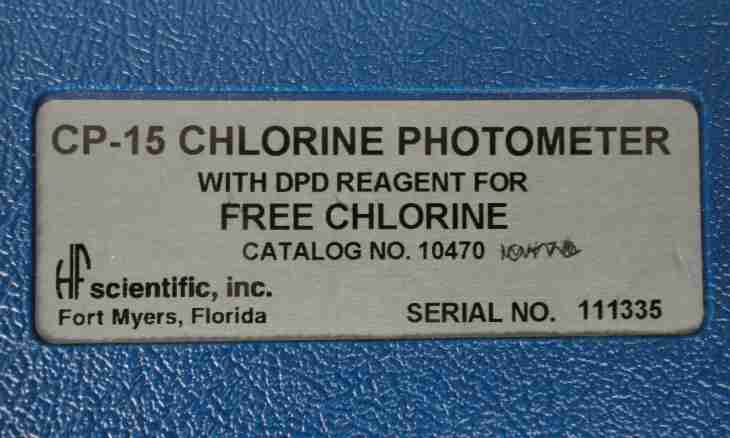This chemical element received the name from the Greek word designating "green". Atomic number of chlorine – 17. It is carried to chemically active nonmetals and included in group of halogens. Chlorine finds broad application in the industry. Found for it at the time application and in military science, using as toxic agent.
Properties of chlorine
Chlorine, being simple substance, it is under normal conditions two and a half times heavier than air. For this reason leak of such gas is dangerous: it is capable to fill basements, first floors of buildings, ravines.
This gas of flavovirent color possesses a pungent smell. The chloride smell can sometimes seem sweetish. Approximately also chloric lime smells.
Chlorine has very high activity. It can connect almost to each chemical element from a periodic system. For this reason under natural conditions this gas meets only in the form of connections or is included minerals.
For the first time chlorine was received in vitro by Karl Sheele. The Swedish chemist described properties of gas and how it is allocated in interaction between hydrochloric acid and manganous peroxide. Sheele noted that the chlorine smell in something is similar to a smell of "royal vodka" and pointed to the bleaching properties of gas.
In 1811 for new chemical element the name was offered: "chlorine". In a year the chemists reduced this name, having called gas chlorine. The term "halogen" was at the same time entered. In the literal translation it means "солерод". Having attributed this name to the same chlorine, scientists distributed the new term subsequently to the whole group of chemical elements which included also chlorine.
Poisoning with chlorine
Gaseous chlorine and its chemical compounds which contain this gas in its active form are toxic, hazardous to health of the person and animals. At chlorine inhalation quite perhaps sharp (or chronic) poisoning. Sharp reaction to effect of gas is characteristic of all forms of poisoning with chlorine. Gas irritates receptors of a mucous membrane of airways. It causes protective symptoms. The person has a cough, tears flow, tickles in a throat.
Chlorine is capable to interact with moisture which contains in a mucous membrane. At the same time hydrochloric acid – it is formed and has toxic effect on an organism.
If concentration of chlorine in the environment is rather high, the person can die already in a few minutes. Narrowing of a glottis leads to respiratory standstill, there occurs consciousness loss. Veins on a face and a neck are blown up.
At average weight of poisoning at victims the consciousness remains, but reflex respiratory standstill for some time is possible. Other symptoms: pain behind a breast, gripes in eyes.
At an easy form of poisoning the upper airways are only irritated. Symptoms pass in several days.

